#Malaise
Junkyard Find: Gray-Market 1981 Mercedes-Benz 380 SEL
Of all the European-market new cars that flooded into the United States during the wild gray-market years of the early and middle 1980s, the Mercedes-Benz W126 S-Class appears to have been the most popular. Today's Junkyard Find is one of those cars, found in a self-service boneyard near Denver, Colorado.
Junkyard Find: 1983 Volvo DL Sedan With 327k Miles
I've been writing about junkyardified cars here at TTAC since November of 2010, when I documented a pair of Fiat 128s in a Denver boneyard. Since then, we've seen plenty of discarded Volvos here, but no Volvo 200 Series four-door sedans!
Junkyard Find: 1982 Peugeot 505S Turbodiesel
Peugeots! The final model year for new Peugeot cars in the United States was 1991, though I find the occasional Mexican-market Pug here and we can still purchase a new Peugeot pepper grinder right now. Back in the 1980s, though, Peugeot managed to hang onto a semblance of American marketplace relevance with the 505. I've found an oil-burning 505 in a boneyard in California's Central Valley, so let's take a look.
Junkyard Find: 1979 Alfa Romeo Spider Veloce
Alfa Romeo Spiders weren't especially difficult to find in American car graveyards as recently as 15 years ago; I saw perhaps one for every three MGBs or Fiat 124 Sport Spiders during my junkyard travels back then. Today, the MGBs and 124s keep showing up in Ewe Pullets just as they always have, while I might find one discarded Alfa Spider every few years. Here's the latest one: a '79 in a yard (on the aptly named Dismantle Court) just to the east of Sacramento, California.
Junkyard Find: 1982 Mercedes-Benz 300 D With 417k Miles
If you owned a car that had traveled more than 400,000 miles during its life, could you bear to send it into the cold steel jaws of The Crusher? In the course of my junkyard adventures, I've found quite a few vehicles that met such a fate. Here's a very solid Mercedes-Benz W123 oil-burner that now languishes in a self-service boneyard in Phoenix, Arizona.
Junkyard Find: 1975 Volkswagen Rabbit 4-Door
From the time of the first KdF-Wagens until distressingly deep into the 1970s, Volkswagens had air-cooled engines in back and rode on goofy 1930s chassis designs. Finally, the Audi 80-based Dasher showed up here as a 1974 model, but it wasn't until the following model year that the first true water-cooled VW went on sale in North America.
Junkyard Find: 1972 Chevrolet Vega Kammback
General Motors built more than two million Chevy Vegas, and they were everywhere on the roads of North America through about the second half of the 1980s. The Vega has been a junkyard rarity for decades now, but I just found six early Vegas all within a couple of rows of one another in a Denver self-service yard. Today, we'll look at the only wagon of that group.
Used Car of the Day: 1976 Ford Thunderbird
We here at TTAC love cars that get the "boat" designation, especially if they're also Malaise-era. This 1976 Ford Thunderbird would seem to fit the definition.
Junkyard Find: 1978 Chrysler LeBaron Coupe
The LeBaron name goes well back in Chrysler history, starting when the coachbuilder known as LeBaron Carrossiers was purchased by Detroit car-body-builder Briggs Manufacturing in 1926 and Chrysler bought Briggs in 1953. After various high-end Imperials got LeBaron branding over the decades, Chrysler decided to turn the Dodge Diplomat into a swanky luxury machine and revive the storied LeBaron name in the process. Here's one of those cars, found in a Denver boneyard recently.
Junkyard Find: 1983 Toyota Corolla Deluxe Wagon
Until the 1984 model year, every new Corolla sold in the United States used a rear-wheel-drive configuration. Today's Junkyard Find is an AE72 Corolla station wagon, from the final model year of its generation sold here, found in a car graveyard in John Steinbeck's hometown.
Junkyard Find: 1983 Datsun 200SX Coupe
Nissan sold two generations of Silvias badged as Datsun 200SXs in the United States from the 1976 through 1983 model years, then sold the subsequent Silvia generation here as the Nissan 200SX until 1989. Today's Junkyard Find, found in a yard just south of Denver, is a nicely preserved example of the final year of the S110 Silvia, as well as of the Datsun name.
Junkyard Find: 1976 Pontiac Grand Prix LJ
From the time John DeLorean and his Pontiac co-conspirators created the 1962 Grand Prix until the very last W-Body Grand Prix appeared a couple of years before Pontiac's demise, millions of North American car shoppers eagerly purchased the affordable sportiness of the Grand Prix. Today's Junkyard Find is an example from the very pinnacle of Grand Prix sales, found in pretty decent condition in a Colorado self-service wrecking yard.
Junkyard Find: 1979 Lincoln Continental Town Car
1979 was the final model year for genuinely enormous Lincoln sedans, with the mighty Continental moving to the Panther platform for 1980. Today's Junkyard Find, found in a Colorado car graveyard recently, is one of those era-ending Continentals.
Junkyard Find: 1982 Cadillac Eldorado Biarritz
Cadillac began using the Biarritz name on the high-zoot Eldorado in 1956, dropped it after 1964, then revived it for 1976 on an Eldo distinguished by its extra-squishy "Cabriolet" vinyl half-roof. The definitive Biarritz came a bit later, though, with the downsized 1979-1985 generation of Eldorados. Here's one of those cars, found on the outskirts of my very favorite Colorado car graveyard.
Junkyard Find: 1983 Jaguar XJ-S HE
When the time came to design a successor to the beautiful Jaguar E-Type, British Leyland gave the world a much different V12-powered coupe. This was the XJ-S, and it stayed in production for more than 20 years. This week's Junkyard Find is an early High Efficiency model, found in a self-service yard near Reno, Nevada last fall.
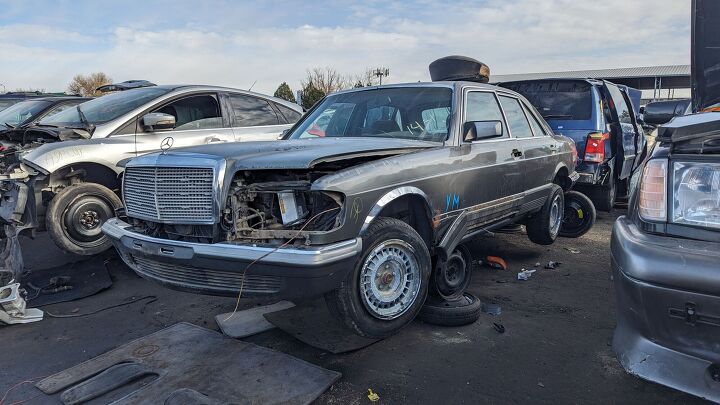
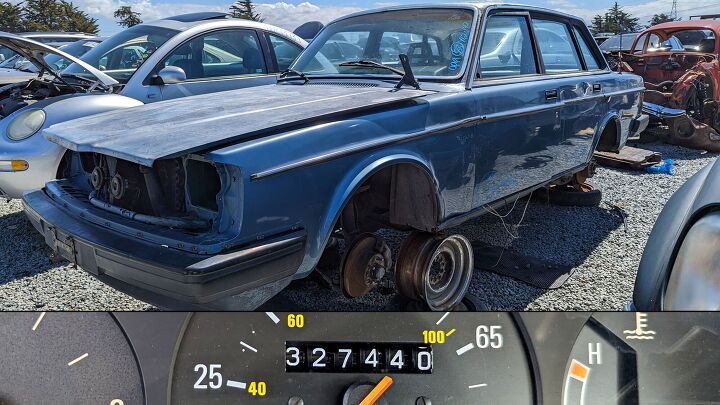


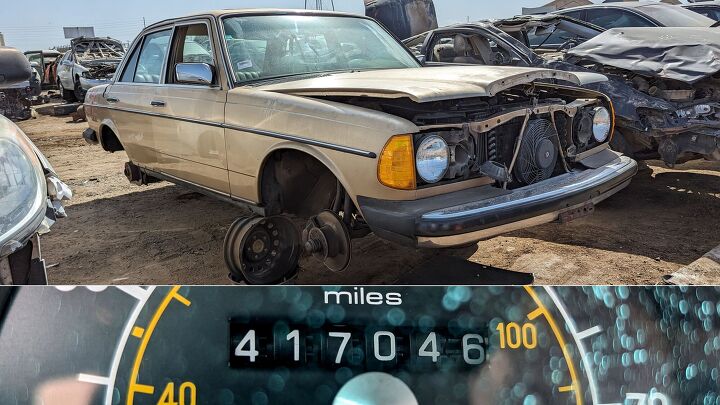
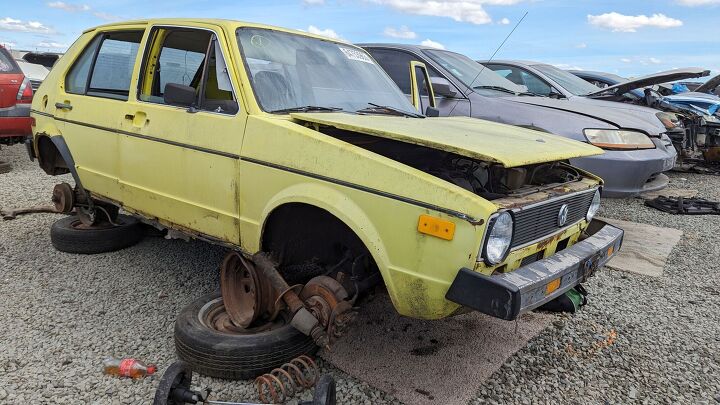


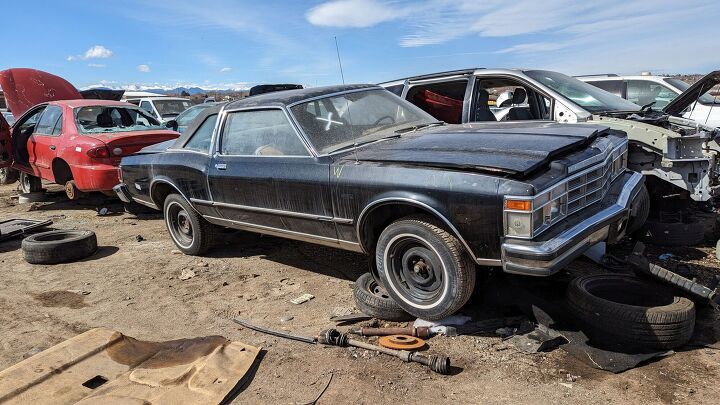
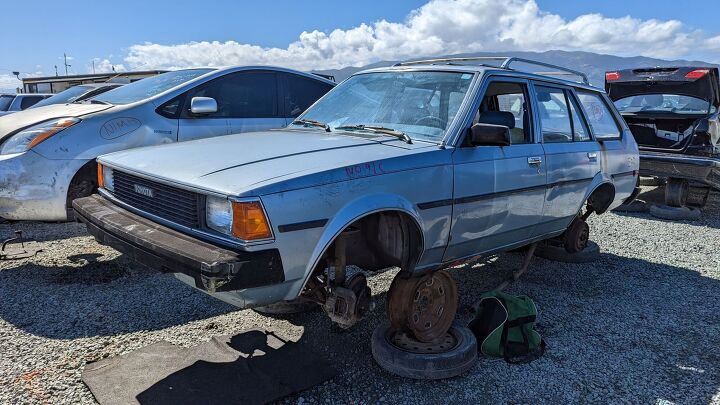


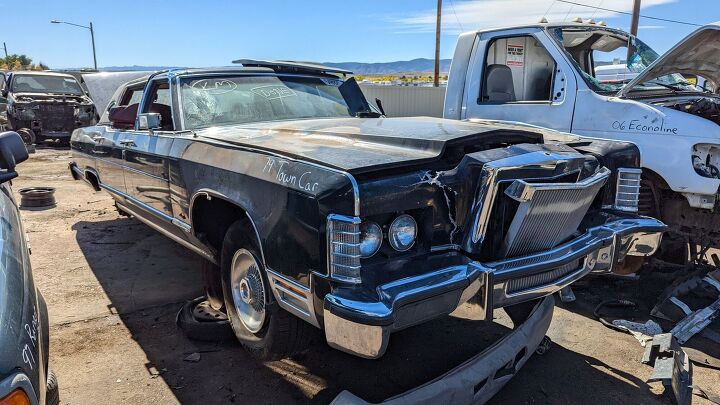
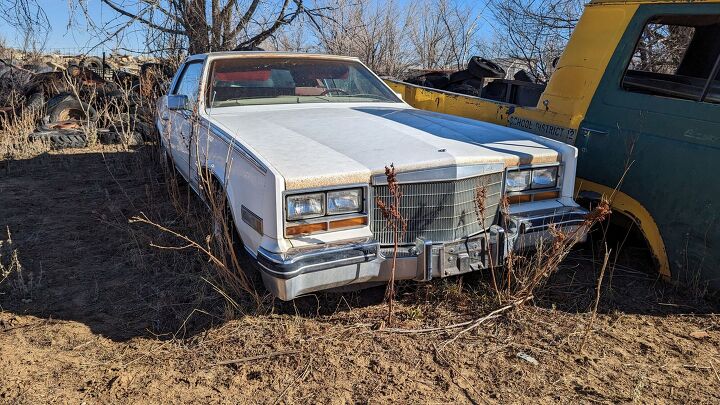
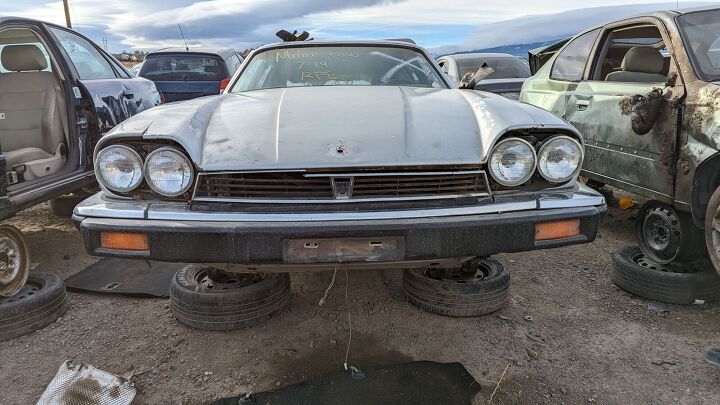












Recent Comments